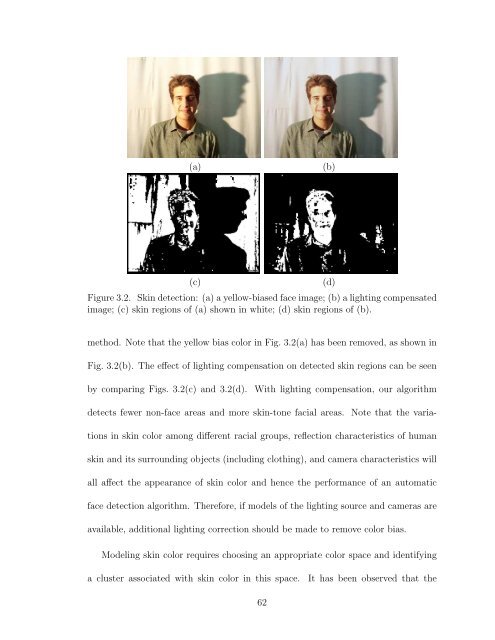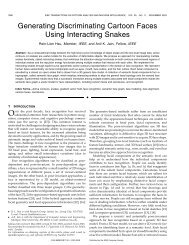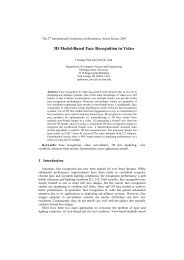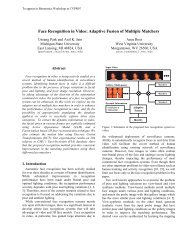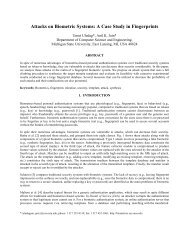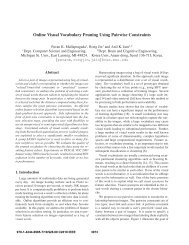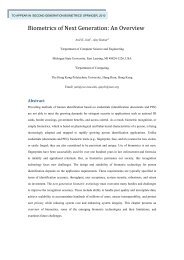Face Detection and Modeling for Recognition - Biometrics Research ...
Face Detection and Modeling for Recognition - Biometrics Research ...
Face Detection and Modeling for Recognition - Biometrics Research ...
Create successful ePaper yourself
Turn your PDF publications into a flip-book with our unique Google optimized e-Paper software.
(a)<br />
(b)<br />
(c)<br />
Figure 3.2. Skin detection: (a) a yellow-biased face image; (b) a lighting compensated<br />
image; (c) skin regions of (a) shown in white; (d) skin regions of (b).<br />
(d)<br />
method. Note that the yellow bias color in Fig. 3.2(a) has been removed, as shown in<br />
Fig. 3.2(b). The effect of lighting compensation on detected skin regions can be seen<br />
by comparing Figs. 3.2(c) <strong>and</strong> 3.2(d). With lighting compensation, our algorithm<br />
detects fewer non-face areas <strong>and</strong> more skin-tone facial areas. Note that the variations<br />
in skin color among different racial groups, reflection characteristics of human<br />
skin <strong>and</strong> its surrounding objects (including clothing), <strong>and</strong> camera characteristics will<br />
all affect the appearance of skin color <strong>and</strong> hence the per<strong>for</strong>mance of an automatic<br />
face detection algorithm. There<strong>for</strong>e, if models of the lighting source <strong>and</strong> cameras are<br />
available, additional lighting correction should be made to remove color bias.<br />
<strong>Modeling</strong> skin color requires choosing an appropriate color space <strong>and</strong> identifying<br />
a cluster associated with skin color in this space.<br />
It has been observed that the<br />
62


